Creapearl 2
Denture Teeth
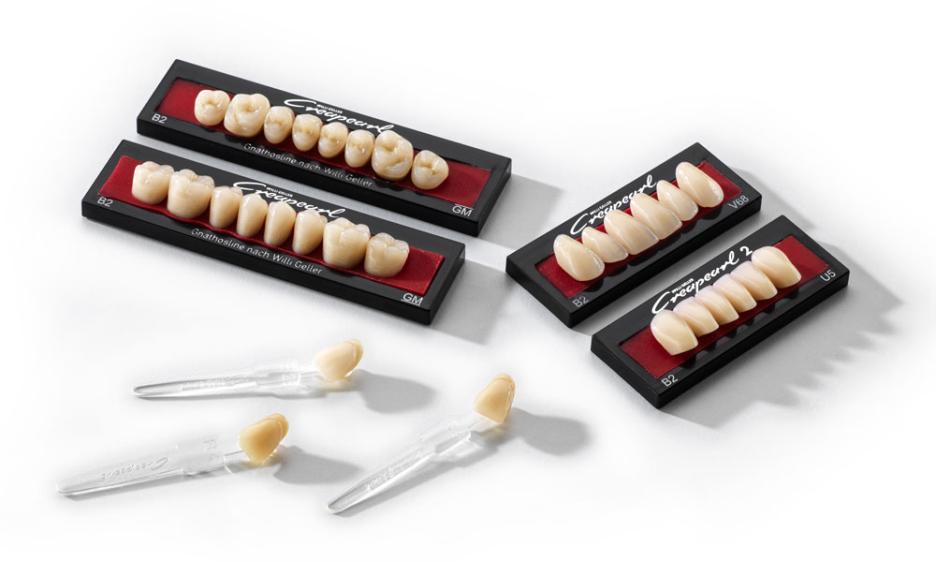
Making denture teeth modelled on nature, while at the same time meeting the basic requirements of prosthetics, that was the declared goal of master dental technician Willi Geller when he developed the Creapearl prefabricated teeth over 25 years ago.
The Creapearl 2 tooth line combines all important properties for the individual fabrication of dentures. A wide range of tooth shapes and sizes, a natural layer structure, natural surface textures and functional aspects satisfy the requirements of denture teeth in the best possible manner.
Even the transition between the tooth crown and the tooth root has been designed like that of natural teeth, so that even complex patient cases with elongated or rotated teeth can be resolved. Due to the layer structure which is identical to nature, the tooth shapes can be individually ground without affecting the light-optical properties of the teeth.
Creapearl 2 Anterior
The Creapearl 2 anteriors are available in many different shapes and feature a very lively colour effect. The nature-like layering with opalescent effect, fluorescence, translucency and nature-identical surface structures designed by Willi Geller are impressive.
Creapearl 2 Posterior
The Creapearl 2 posterior line features high abrasion resistance and very high resistance to high chewing forces. Drawing on his extensive experience in the NAT/NFR wax-up technique, master dental technician Dieter Schulz (†) designed the posterior teeth using the occlusal compass. Thanks to this easy-to-follow set-up concept and the multifunctional occlusal surface design (with free spaces in the occlusion), all types of tooth set-up and all bite situations can be realised.

Set-up principles

Type A Anatomic – Maxillary anterior teeth with slightly offset tooth necks
The denture tooth as perfect anatomical copy of a natural tooth.
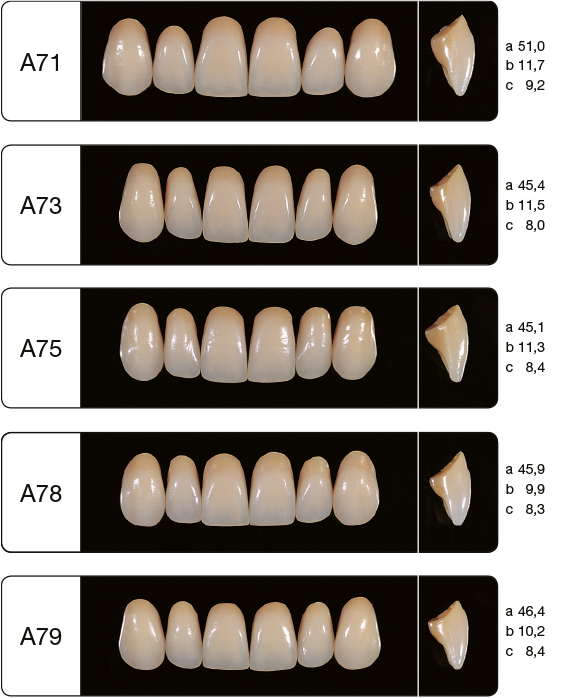
Type V Vario – Maxillary anterior teeth for individual contouring
By modelling the gingival margin, the clinical dental crown can be modified for a customised appearance with or without grinding the neck of the tooth.
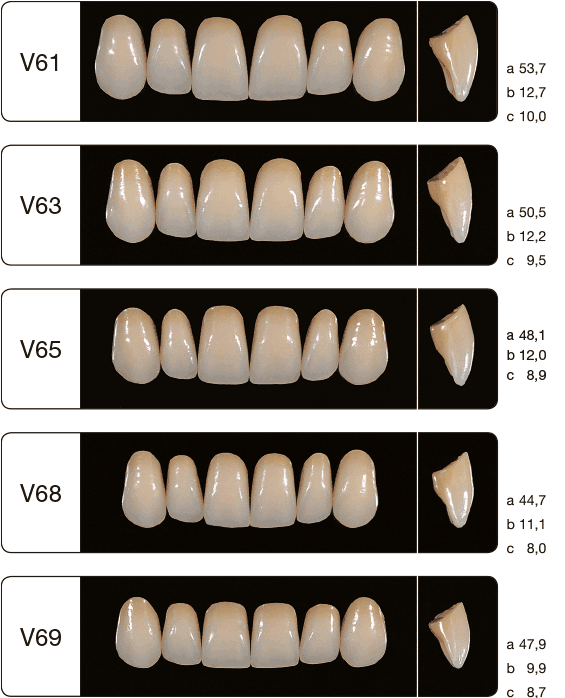

Type U – Mandibular anterior teeth
The mandibular anterior teeth can be designed in the same manner as the type V Vario without affecting the anatomical conditions. This allows the tooth length to be determined individually.
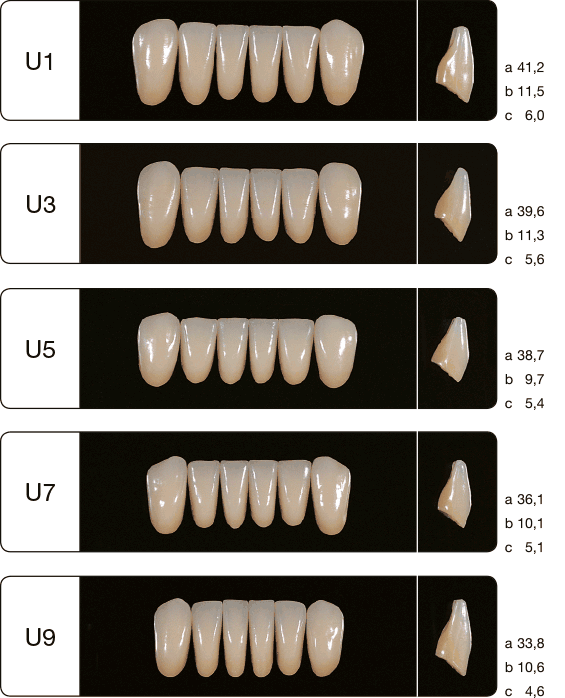
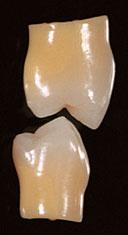
Dynamicline D
Calotte: 140
Condyle path inclination (HCN)
FH 45° / CE 30°
Bennett angle 10°, immediate sideshift (ISS) 0.5 mm
Lateroretrusion (LRT) 20°
Retrusion (RT) 0.5 mm

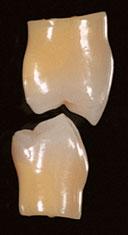
Balanceline E
Calotte: 140
Condyle path inclination (HCN)
FH 30° / CE 15°
Bennett angle 10°, immediate sideshift (ISS) 1.0 mm
Lateroretrusion (LRT) 20°
Retrusion (RT) 1.0 mm
Construction morphology (NAT)
Extended functional morphology (NFR)
MDT Dieter‑Schulz


Balanceline F
Basal reduced
Calotte: 140
Condyle path inclination (HCN)
FH 30° / CE 15°
Bennett angle 10°, immediate sideshift (ISS) 1.0 mm
Lateroretrusion (LRT) 20°
Retrusion (RT) 1.0 mm
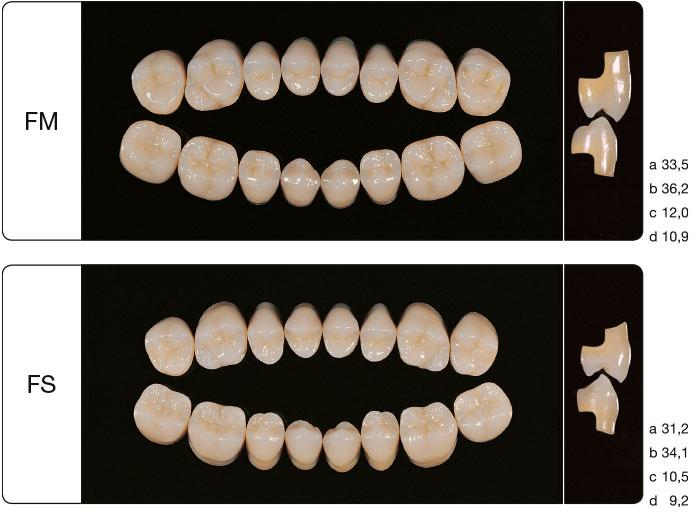
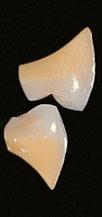
Gnathosline G / Willi Geller
Calotte: 140
Can readily be used in the combination technique and full dentures due to the anatomical shape and the cusp inclination.


